Storage Consumption by Object Granularity
The Storage Consumption by Object Granularity report provides detailed insights into storage usage at the object level in Cohesity Cloud Protection Service.
Example use case: Which object is consuming the most storage space in the last 24 hours?
Filter Report Data
The report supports multiple filters to pare down the data that you want to view in the report:
-
System—Select all cluster(s) to include.
-
Source—Select all the sources to include.
-
Object Type—Choose the types of objects to include — VMware, Microsoft SQL, Generic NAS, Microsoft 365, Physical, and so on.
-
Policy—Select all the protection policies to include.
-
Time Range—Set the time period for your report.
Glance Bar
The glance bar provides a summary of the report for the specified period:

Chart
The report includes the following charts:
-
Data Ingested & Retained by Type
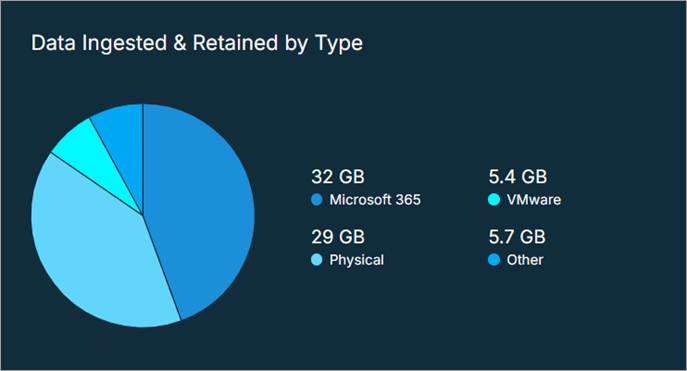
-
Storage Consumed for Retained Data by Type
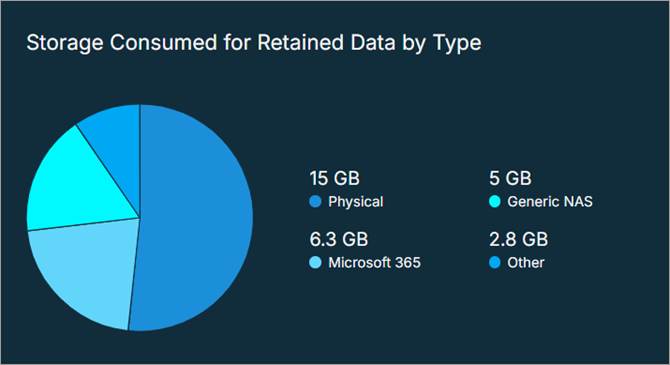
-
Data Ingested & Retained and Storage Consumption for Retained Data by Type

-
Top Consumers by Data Ingested & Retained
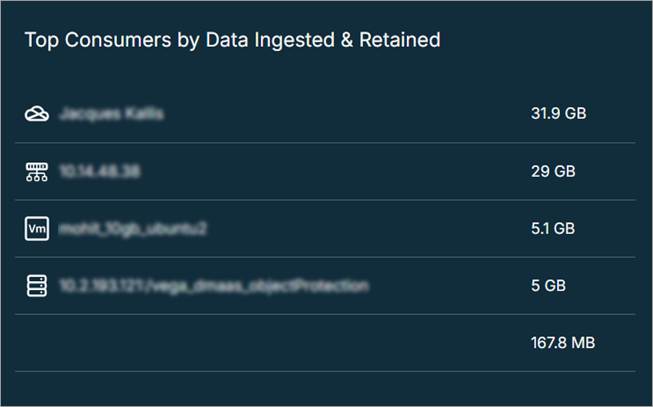
-
Top Consumers by Storage Consumed for Retained Data
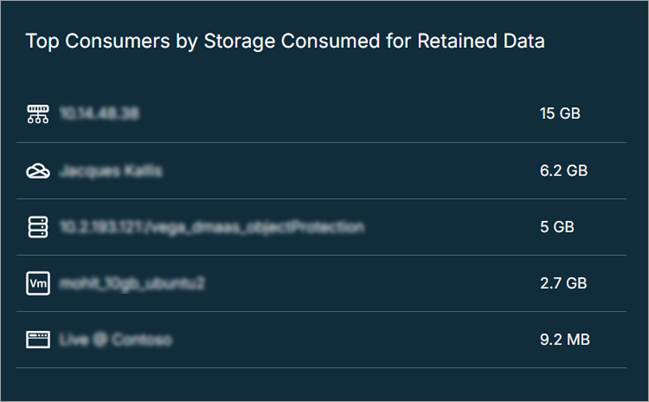
-
Top Consumers by Data Ingested & Retained Growth
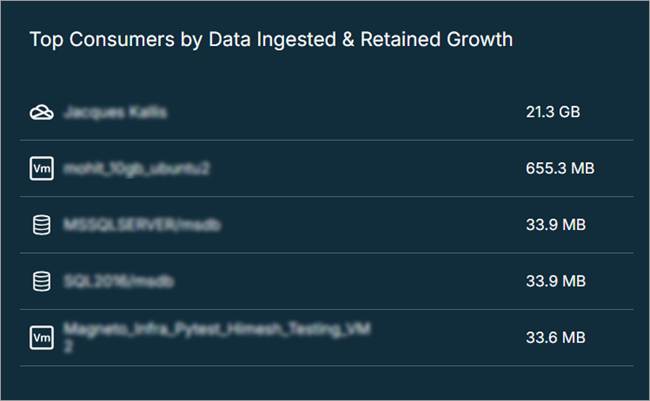
-
Top Consumers by Storage Consumed for Retained Data Growth
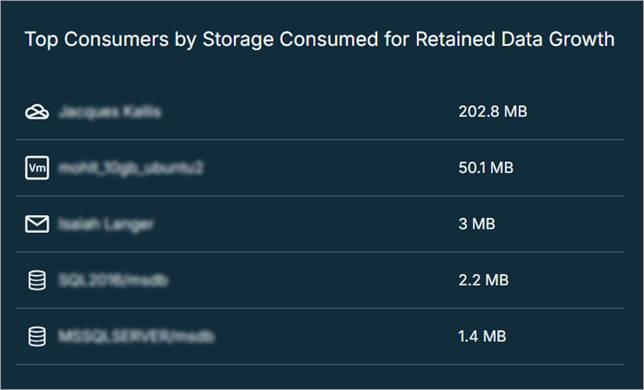
Report Data
The following table describes the data displayed in the Data table. Use the search bar to filter the data by object name, source, policy, or system name.
You can add or remove columns. For more information, see Customize Table Columns.
| Column Name | Description |
|---|---|
| Object Name | The name of the object. |
| System | The cluster name or cloud region for backup data. |
| Data Ingested & Retained |
The size of the source data’s initial full, plus incrementals across retained snapshots, as of the end date in the selected date range. Note that this is before deduplication, compression, or resiliency. If the original initial full has expired from the retention window, this metric does still include a virtual initial full in that the size of the source data on the first day of the retention window is included in this metric. |
| Data Ingested & Retained Growth | The increase in source data's initial full, plus incrementals across retained snapshots, over the selected date range. |
| Data Reduction | This equals the Source Data Retained / Storage Consumed for Retained Data, as of the end date in the selected date range. |
| Deduplication Ratio | The reduction of storage required that is produced by data deduplication, the process of eliminating excess copies of data (at the file or block level) to significantly decrease storage capacity requirements. |
| Compression Ratio | The reduction of storage required that is produced by data compression, the process of modifying, encoding, or converting the bits structure of data in such a way that it consumes less storage space. |
| Storage Consumed for Retained Data | The size of Cohesity storage consumed for all retained snapshots, after reductions for deduplication and compression, excluding resiliency, as of the end date in the selected date range. |
| Storage Consumed for Retained Data Growth | The increase in Cohesity storage consumed for all retained snapshots, after reductions for deduplication and compression, excluding resiliency, over the selected date range. |
| Resiliency Impact | The size of additional Cohesity storage consumed for resiliency (such as RF2 or Erasure Coding). It does not include uncollected garbage nor metadata. |
| Storage Consumed with Resiliency | The size of Cohesity storage consumed for all retained snapshots, calculated after reductions for deduplication and compression, and including inflation for resiliency, as of the end date in the selected date range. |
| Storage Consumed with Resiliency Growth | The growth of Cohesity storage consumed for all retained snapshots, calculated after reductions for deduplication and compression, and inflation for resiliency, over the selected date range. |
| Snapshots | The number of snapshots protected. |
| Last Snapshot | The date and time of the last snapshot protected. |
| Date of Last Run of Pipeline | The most recent date when the ETL metric data ingestion pipeline ran. |
